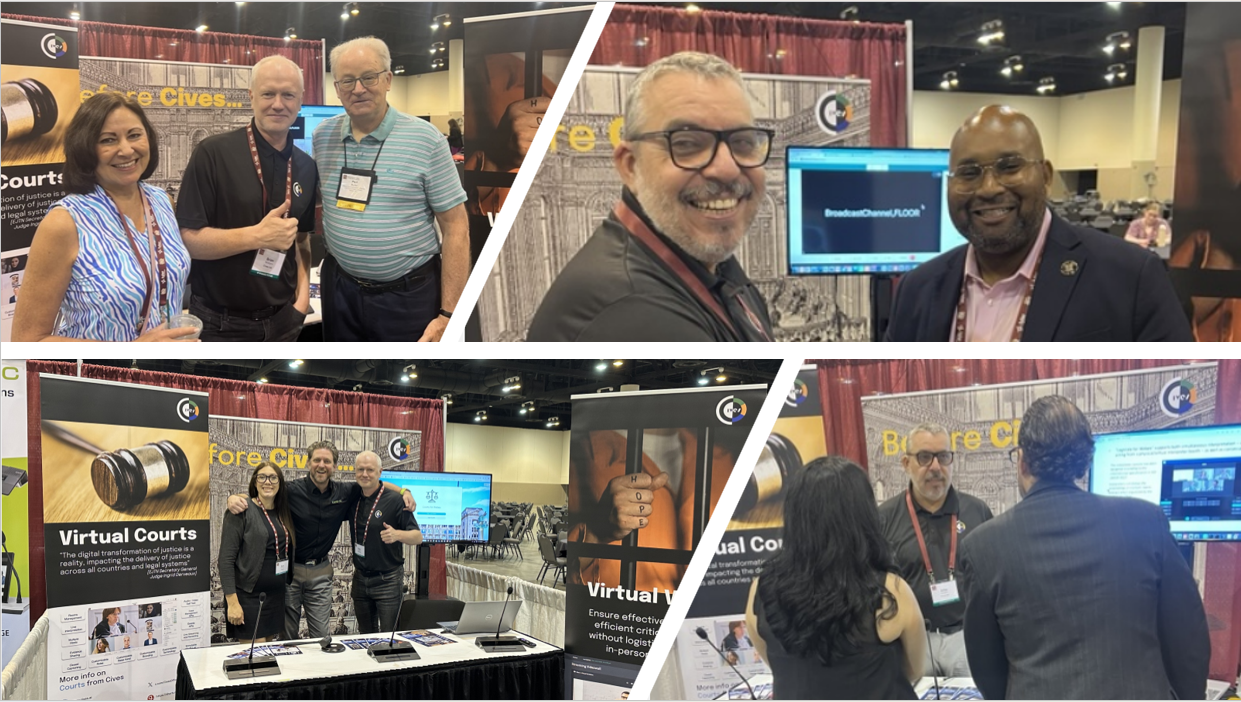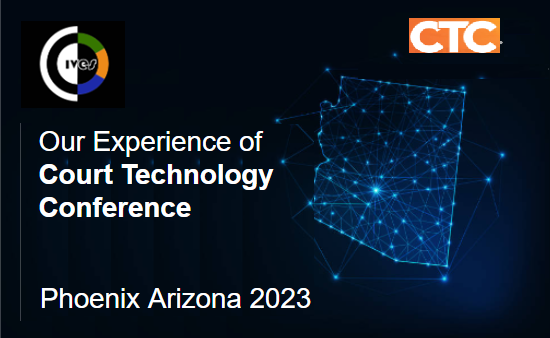Our Unforgettable CTC Adventure in Phoenix, Arizona
Under the relentless Arizona sun, against the backdrop of the awe-inspiring desert, I embarked on an extraordinary journey at the Courts Technology...
2 min read
Brian McGlynn : Jul 28, 2025 11:06:23 AM

Omaha welcomed us with warm hospitality, but what struck us most at this year’s NACM Conference wasn’t the location — it was the people. The conversations. The vision. This year's theme, “Promoting Public Trust and Confidence through Service and Collaboration,” resonated deeply with me. As we return from NACM 2025, we're filled not just with insights, but with a renewed sense of responsibility.
At Cives, our mission has always centered on empowering courts to better serve their communities. But this week reminded us that service isn't just about tools and technology — it's about empathy. It's about connection. It’s about ensuring that everyone who steps into a courthouse — whether they're confident or terrified, fluent in English or struggling with it, represented or standing alone — feels seen, heard, and treated with dignity.
I’ve been to a lot of conferences over the years, but NACM 2025 in Omaha felt different — more personal, more urgent, and, honestly, more emotional than I expected. Representing Cives alongside our CEO, Alfeo Pareschi, I came into this event excited to connect, learn, and listen. I left with something deeper: a renewed sense of purpose.
The theme couldn’t be more timely. In every session and conversation, one truth came through loud and clear: our justice system is at a crossroads. And how we — as technologists and partners to the courts — show up in this moment matters.
Alfeo and I were especially struck by the honesty of participants. These weren’t just academic discussions. These were deeply human stories — of people navigating complex court systems in a language they don’t speak, of self-represented litigants trying to advocate for themselves in intimidating environments, of court leaders working tirelessly to make access real for everyone.
About the focus on limited English proficiency and cultural responsiveness, Alfeo turned me and said he felt both inspired and challenged.
“We talk a lot about innovation,” he said, “but this is about dignity. This is about making people feel like they matter.”
That stayed with me. As a product leader, I think about usability and experience all the time. But Alfeo reminded me: at the end of every workflow, there’s a person — often a vulnerable one.
The conversation around self-represented litigants hit hard for both of us. These are individuals walking into courtrooms with no legal background, no guidance, and often no support — and yet we expect them to navigate a judical system designed by and for professionals. We must do better. And we can do better. The courts we admire most aren’t just adopting digital tools — they’re rethinking the user journey with empathy at every step.
That idea — designing with empathy — came up again and again in our conversations at the Cives booth. Court administrators, clerks, judges, and technologists all echoed the same goal: build systems that serve people, not the other way around.
I was especially encouraged by the passion around collaboration — not just between courts and vendors, but among jurisdictions, community organizations, and the very people the courts serve.
At Cives, we believe that building court technology is not about checking boxes — it’s about building trust. And trust is built one clear form, one intuitive interface, one compassionate experience at a time.
Our conversations often came back to one simple truth: courts are not just institutions — they are human systems. Every improvement, every reform, every digital tool must remember that. It’s why Cives exists, and it’s why we left Omaha more determined than ever to rise to the challenge.
As we are laving Omaha, I feel deeply grateful — for the stories we heard, the ideas we exchanged, and the collective path we’re shaping. And I’m proud to stand alongside Alfeo and the entire Cives team in recommitting ourselves to what this conference made so clear: access to justice is a design challenge, a leadership challenge, and above all, a human challenge.
To everyone who stopped by our booth, who shared stories, who asked hard questions — thank you. You reminded us why we do this. And to all those working tirelessly across the country to make the justice system more fair, more accessible, and more human: we see you, and we are with you.
Let’s keep building together!

Under the relentless Arizona sun, against the backdrop of the awe-inspiring desert, I embarked on an extraordinary journey at the Courts Technology...

In the heart of the dazzling Las Vegas Strip, the tech world converged for one of the most anticipated events of the year - Cisco Live 2023. With the...

It’s not every conference where you walk away with WhatsApp numbers instead of business cards—but the 2025 IACA (International Association of Court...